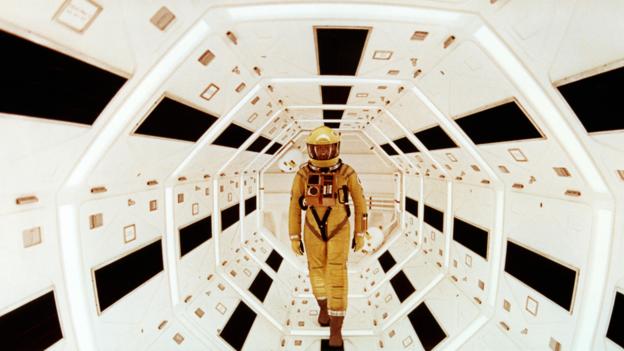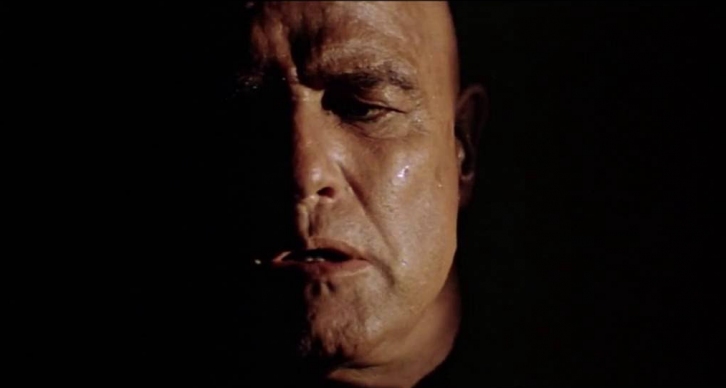Lucidno
Off-Hollywood
One exemplary director who liked to play tricks and make both his characters and audience suffer is Alfred Hitchcock. Rope (1948) and Psycho (1960) both draw on the horrors of otherwise secluded comfort zones, while in Rear Window (1954), James Stewart plays a professional photographer called Jeff who is recovering from a broken leg and is confined to a wheelchair in his New York apartment. From his rear window he can see several apartments across a courtyard and a heat wave leads him to becoming an “involuntary voyeur” from his window. While passively observing the lives of many people, he turns his camera lens to zoom in on one particular couple; a traveling jewellery salesman called Lars Thorwald and his bedridden wife. One night he hears screams and subsequently sees Thorwald making repeated late-night trips carrying his sample case, and later having removal men haul away a large trunk. Jeff discusses all this with his fiancée Lisa (Grace Kelly) and his visiting nurse, convinced that Thorwald has murdered his wife. His enforced isolation leading to voyeurism will subsequently serve to encroach upon his seclusion and punish him.

Stanley Kubrick’s oeuvre has always been pre-occupied with the human in a solitary state even in the abundance of human presence, with Barry Lyndon (1975), Full Metal Jacket (1987) and Eyes Wide Shut (1999) underlining this. However, 2001: A Space Odyssey (1968) and The Shining (1980) most definitely project isolation in its socially remote state. The latter also falls into the sub-category of the family in isolation. Jack Nicholson plays a frustrated writer called Jack who is asked to be caretaker for the winter in a large isolated hotel. It seems like a great idea and perfect for working on his next novel, so he takes his wife Wendy and young son Danny along for the ride. However, ghosts, twins, and a revealingly psychic son soon drive him mad. Adapted from the Stephen King novel, The Shining is now considered a master work of psychological horror with possible influences from Andrei Tarkovsky’s Sci-Fi film Solaris (1972), itself conspicuously drawing allusions to Kubrick’s 2001: A Space Odyssey, while the memorable character of Danny was conspicuously echoed in the characterisation of Cole Sear in M. Night Shyamalan’s The Sixth Sense (1999).
When it is not manufacturing often border-implausible action films with central characters that are given the task of saving the world, comedy is another ubiquitous genre the Hollywood Factory uses effectively. One of the most thoughtful premises in a comedy film that corresponds with isolationism is Groundhog Day (1993). Directed by Harold Ramis, it stars Bill Murray in his usual deadpan comedy persona, this time as a bored TV weatherman who, when covering the annual Groundhog Day event, finds himself caught up in a time loop, repeatedly reliving the same day with no seeming escape. Despite, these high-profile earlier alternative comedy roles, and by managing to keep the same basic persona, Murray has notably progressed into more thoughtful roles that include the highly compelling and isolation-themed Lost in Translation (2003) by Sofia Coppola, as well as films for Jim Jarmusch like Broken Flowers (2005).
War and Survival
As well as its traumas and the destruction of mankind en-masse, War (even so-called justified ones) has scaled the dark depths of the human soul. However, through all art forms, it has still made for a compelling subject matter, not least in cinema, and continues to do so for more recent conflicts as well as the revising of old ones, like World War One in 1917 (2019). Since the late 1980s, the Vietnam War attracted many American directors and was also at a safer time distance to address in films like Platoon and Full Metal Jacket (both from 1987). However, up and coming director Michael Cimino chose to focus on the topic not long after its aftermath. While The Deer Hunter (1978) opened the same year as Hal Ashby's Coming Home, it was planned a couple of years earlier and was also the first film about Vietnam to reach a wide audience to critical acclaim. Three steel worker friends from a small industrial town down the river from Pittsburgh are drafted to fight in the Vietnam War. We see their humble but content human existence torn apart as they are displaced in a war they know little about. After the horrors, the three friends’ lives are drastically changed physically and mentally; one is invalid while the other goes back to Vietnam to rescue the third friend who is “reportedly missing” there.
 Apocalypse Now (1979) was released a few months after The Deer Hunter and looks at the mental state of war from another perspective. If The Deer Hunter depicts the traumatic effects of war then Apocalypse Now projects its insanity. This epic war film with a more high-profile cast was directed, produced and co-written by Francis Ford Coppola and stars Martin Sheen as Captain Willard who is on a secret mission down river from South Vietnam into Cambodia to assassinate Colonel Kurtz (Marlon Brando), a renegade Army Special Forces officer who has decamped in a remote region there to start a Guerrilla War but is now accused of murder and is presumed insane. The screenplay was co-written by Coppola with John Milius and was loosely based on the 1899 novella Heart of Darkness by Joseph Conrad, with the setting changed from late 19th-century Congo to the Vietnam War. With a cast that also includes Robert Duvall and a cameo from Harrison Ford, the appearance of Dennis Hopper as a drug-induced photo journalist was rumoured not to be merely acting, and Martin Sheen suffered a near-fatal heart attack on set, while the film production itself (like The Deer Hunter) was delayed and over-budgeted, showing that the art of film-making itself can be isolated and traumatic.
Apocalypse Now (1979) was released a few months after The Deer Hunter and looks at the mental state of war from another perspective. If The Deer Hunter depicts the traumatic effects of war then Apocalypse Now projects its insanity. This epic war film with a more high-profile cast was directed, produced and co-written by Francis Ford Coppola and stars Martin Sheen as Captain Willard who is on a secret mission down river from South Vietnam into Cambodia to assassinate Colonel Kurtz (Marlon Brando), a renegade Army Special Forces officer who has decamped in a remote region there to start a Guerrilla War but is now accused of murder and is presumed insane. The screenplay was co-written by Coppola with John Milius and was loosely based on the 1899 novella Heart of Darkness by Joseph Conrad, with the setting changed from late 19th-century Congo to the Vietnam War. With a cast that also includes Robert Duvall and a cameo from Harrison Ford, the appearance of Dennis Hopper as a drug-induced photo journalist was rumoured not to be merely acting, and Martin Sheen suffered a near-fatal heart attack on set, while the film production itself (like The Deer Hunter) was delayed and over-budgeted, showing that the art of film-making itself can be isolated and traumatic.
The War film also overlaps with the Survival film, which is considered a subgenre of the adventure film. Survival films are darker than most other adventure films and usually focus their storyline on a single protagonist. Also, the films tend to be set in a contemporary context so that film audiences are familiar with the setting and the character’s dilemmas. Tom Hanks deserves a special mention here as he has portrayed characters that have had to overcome the most difficult obstacles to survive, both on Earth and in Space, with his portrayals in Cast Away (2000) and the 1995 dramatization of the Apollo 13 moon program respectively, not to mention dealing with a then stigmatized AIDS diagnosis in Philadelphia (1993). These portrayals were eerily manifested in real life as he became the first famous person to be diagnosed with the Covid-19 virus in Australia this year, the good news being that, just like his heroic endeavours on screen, he has had the will to overcome.
Just as in War films, the dramatic portrayals of survival have often included real-life events, even if the films themselves can exaggerate them to the point of questionable plausibility. Films like Alive (1993) and Everest (2015) however, were more authentic portrayals of man versus nature and in the most extreme cases of historical challenges. The case for authenticity becomes even stronger when it takes the form of a documentary drama. Touching the Void was the critically acclaimed 2003 survival film by British director Kevin Macdonald concerning Joe Simpson and Simon Yates's disastrous and near-fatal climb of Siula Grande in the Peruvian Andes, in 1985. It was based on Simpson's 1988 book of the same name and mixes reflective interviews from the present with reconstructions of the events 20 years earlier to portray endurance, isolation and survival. Otherwise, Man on Wire is a 2008 British-American biographical documentary film directed by James Marsh which looks at scaling man-made heights and chronicles Philippe Petit's highly publicized 1974 high-wire walk between the recently built Twin Towers of New York's World Trade Center complex, at the time the tallest building(s) in the world. The title of the film refers to the police report that led to the arrest of Petit after his near one hour performance and it is crafted like a heist film, including rare preparation footage and photographs alongside re-enactments and present-day interviews with the participants.
With the perennial disruption of the equilibrium in both fictional films and documentaries, the isolated individual or protagonists feature in an endless list of films from World Cinema. Here, the focus has mainly been on the psychologically isolated state caused by levels of displacement in either the personal or physical world and has also been exclusive to a selection of popular but mainly artistic films from American Hollywood and European Cinema; ones that have personally compelled and formed a lineage of sorts to help better contemplate real-life disruptions, like the current global pandemic and involuntary isolation.
Steven Yates

